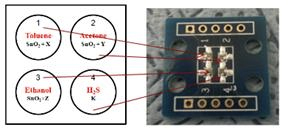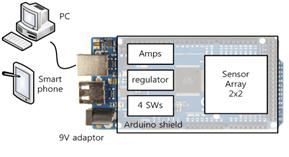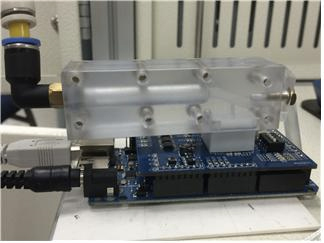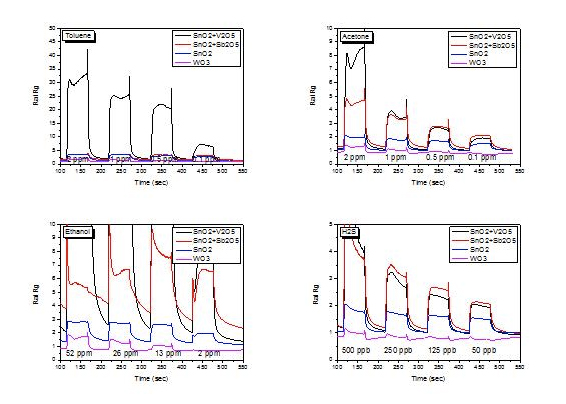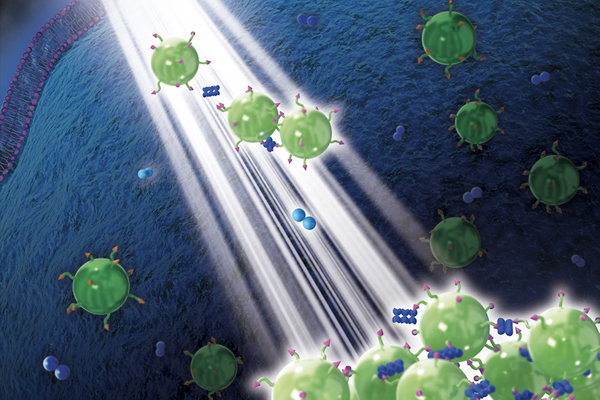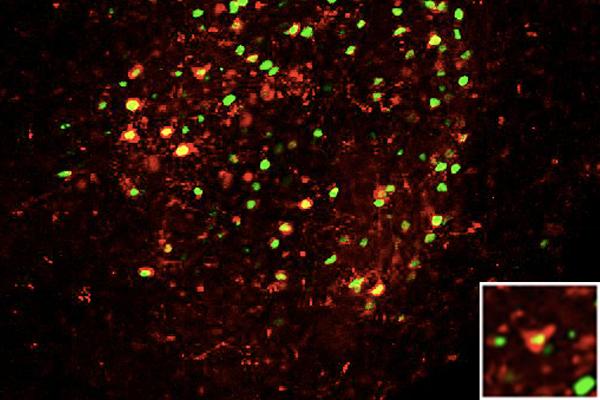Mobile devices such as phones, tablet PCs, and wearable gear have become indispensable for our busy lives. We cannot imagine a single day without them. They provide us with convenience and fun as well as connecting us to others. Therefore, mobile device manufacturers tend to add as many functions as possible into their newly-developed mobile devices. Health care analysis through exhaled breath has been one of the most desired functions but the technology has not been available until now. The biggest hurdle has been a lack of stable and reproducible sensors with low power consumption.
The MOSAIC (Mobile Sensors And IT Convergence) Center in the IT Research Institute in KI, which was established for the development of chemical gas sensors and their systems, has developed a 2×2 chemoresistive sensor array for portable devices as shown in Fig. 1. Here, a MEMS platform has been used requiring power consumption of only 24 mW. Four different metal-oxide materials were carefully designed and selected. They have different sensitivities for the unique bio-markers of diabetes, halitosis, ethanol, and lung problems. The stability of the materials was considered the most important parameter for the application. They were added to the MEMS-heating platform in the form of a paste and heat-treated using thermal energy supplied from the MEMS heater. A sensor-array system was installed on the circuit board in the form of a gas chamber to hold the exhaled gas for sensing. The exhaled breath is fluid-dynamically sampled with a specially-designed tube that leads to the sensor-array system. The measuring system can be connected to a smart phone or PC with an independent power supply as shown in Fig. 2. It can differentiate specific gases from a complicated mixture of gases exhaled from the mouth as shown in Fig. 3. In this example created through LABVIEW, the responses from the individual gas sensors are shown upon exposure to consecutive increases of aceton concentration from 1ppm to 4ppm.
We plan to cooperate with hospitals to collect usable data for a real application. Data acquisition from various patients and their interpretation algorithms will transform the output from the sensor array in a mobile phone into sensible language for the tester. We expect it to serve as a precautionary device for serious diseases as well as other creative functions such as environmental monitoring.
